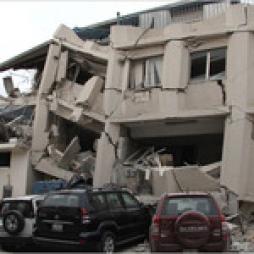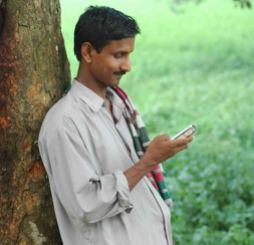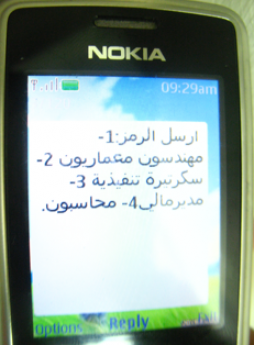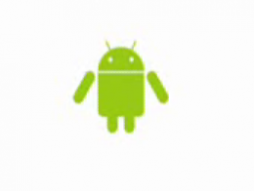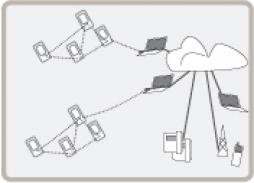humanitarian relief
Posted by PrabhasPokharel on Jan 13, 2010
Relief efforts are ongoing after a powerful 7.0 earthquake that struck Haiti yesterday. Mobile phones play a huge part in relief efforts today, from supporting donations, citizen media coming from affected areas, to emergency relief coordination. Here are some links and information you might find useful in responding to and learning more about the Haiti earthquakes.
Mobile Donations
[This section last updated 01/15/2010 12:59 pm]
Text message donations are exploding in the aftermath of the earthquake, similar to what happened in 2004 after the Indonesian Tsunami. $9 million has already been donated by noon on Friday January 15 just to the Red Cross via the 90999 number.
A list of all short codes to text to to donate on your phone bill in the United States:
- Text HAITI to 90999 to donate $10 to the Red Cross for Haiti efforts. You can donate $10 up to three times, and 100% of the donations will reach the Red Cross Foundation. This effort is run by Mobile Accord.
- Text YELE to 501501 to donate $5 to the Wyclef Jean's Yele Haiti Foundation. 501501 is run by Give On the Go, a service provider for the Mobile Giving Foundation. Ashley Nay, who is in Business Development at Give On the Go told MobileActive on the phone that "100% of the donations go to YELE" from these donations.
- Text HAITI to 25383 to donate $5 to International Rescue Committee.
- Text RELIEF to 30644 to get automatically connected to Catholic Relief Services and donate money with your credit card.
- Text CERF to 90999 to donate $5 to The United Nations Foundation.
- Text DISASTER to 90999 to donate $10 to Compassion International.
- Text HAITI to 85944 to donate $5 to the Rescue Union Mission and MedCorp International.
A list of all the non-US short codes that we know are serving as donation lines.
- Germany: text HAITI to 81190 to donate $5 (out of which $4.83 will go to Aktion Deutschland Hilft).
- Denmark: text Katastrofe to 1231 to donate 150 kr, or call 90 56 56 56.
- Canada: text HAITI to 45678 to donate $5 to the Salvation Army, again courtesy of the Mobile Giving Foundation.
- Italy: text to 48540 to donate to the Italian Red Cross if you are on the WIND or 3 networks. If you are on Vodacom or TIM, text 48451 to donate EUR 2 (Telecom Italia users can also call this number). (Read More)
- France: 80 222/Croix Rouge française, 80 333/Secours Populaire, et 80 444/Secours Catholique. One euro per SMS. (From a user)
- Mexico: Telcel users can text 8888, donations will go to the Carlos Slim Foundation (Thanks @sorrelkydd)
More organizations that are working in Haiti in relief efforts are listed on The NYTimes Lede Blog and more on MSNBC's How to Help page.
Ongoing Communications Efforts
[Update, as of 01/15/2010, ~1:30pm]
- A good source for ongoing communication information is the Ushahidi Situation Room. We reported about the Ushahidi map for Haiti (Ushahidi is a mapping platform for crowdsourced crisis information) earlier, and it is being actively updated by the situation room setup at Tufts' Fletcher School. The Ushahidi blog also lists many of the other map-based information collection systems that have been set up.
- This morning, Erik Hersman posted a mobile network update (01/15/2010, 10:03am) on the Situation Room page saying "Digicel is at 50% Voila & Haitel at 75%." USA Today reported yesterday that Jamaica-based Digicel has had problems getting themselves into Haiti, and that "the network is severely congested 'because of the number of people making calls and trying to receive calls.'"
- A story on MSNBC from yesterday details some of TSF's work in Haiti. From the article:
Telecoms Sans Frontieres is hooking up terminals to facilitate communications for U.N. relief workers in Haiti, and will eventually let Haitians make free two-minute phone calls to anywhere in the world. The group's U.S. representative, Paul Margie, said the biggest challenge isn't technology but security. "The security and logistics situation on the ground is pretty bad, so finding secure locations to do these things is hard," he told me.
[Following was the section as it was posted the day after the earthquake, 01/13/2010, ~1:00pm]
- We are hearing that Digicel, one of the main mobile operators, is intermittently working as of right now, and satellite telephone services has allowed many first-responders and witnesses to report via skype on the devastation in Haiti. Digicel has also committed $5 million for relief efforts. [WSJ]
- Telecoms Sans Frontiers is deploying a team for support with emergency telecoms. You can donate to their efforts at this page. From the article:
Port-au-Prince has been severely affected including critical services such as, electricity, water and phone lines. Communication appears to be almost impossible at this time, with phone lines down. Numerous buildings, including the United Nations building, are reported to have been seriously damaged.
Facing this humanitarian catastrophe, TSF has deployed an emergency team from the American base in Managua to provide a vital support in emergency telecoms. They are carrying satellite mobile and fixed telecommunications tools. Reinforcements will also be sent from TSF’s international Headquarters. In close contact with the United Nations Office for the Coordination of Humanitarian Affairs (OCHA) and the European Commission’s Humanitarian Aid Department (ECHO), they are now flying to Saint-Domingue in order to rejoin Port-au-Prince as soon as possible.
At this stage there is very limited access because of debris and other obstacles on the roads. It seems that no communication can be made with the airport either, which is reported to be closed.
- The Crisis Commons wiki is documenting some of the News, Data, and Communications efforts. In particular, they report about two mobile communication service efforts (they seek confirmation whether these are working yet):
Information from the Ground
Twitter Lists
Twitter lists have become a quick-fire way to organize and aggregate information related to events and topics. Quite a few twitter lists have been set up by several news organizations after the Haiti earthquake. Here is a sample:
The twitter hashtag #haiti and a search for haiti on twitter yield lots of info.
US State Department/American Citizens
Barack Obama in speech to Americans this morning listed several ways in which the US government is trying to help relief efforts in Haiti:
- Americans seeking info on family in Haiti should call 1-800-407-4747
- Updates from the White House's efforts will be put on The White House Blog. From the Department of State, updates are coming on the official twitter-verified DipNote.
- DipNote also says: Americans in Haiti can call the Embassy’s Consular Task Force at 509-2229-8942, 509-2229-8089, 509-2229-8322, or 509-2229-8672.
Live Blogs / Other semi-live coverage
Many blogs are covering the happenings live, and incorporating photos and videos coming in from citizen reporters in Haiti:
- Reuters has a page offering live coverage of events. Includes picture reports coming in through twitter, as well as News from other sources.
- CNN iReport, a citizen journalism effort, is aggregating citizen-submitted videos and photos on this page.
- The Lede Blog at the New York Times has ongoing coverage.
- NPR also has ongoing coverage on its Two Way blog.
- The Guardian also has liveblogging efforts.
(More here). Compiling citizen voices in Haiti are on this Global Voices Online page, to be updated as more content comes in.
YouTube
Youtube's search on earthquake Haiti yields many videos, and there are some dedicated channels and playlists on the cause like this one from CitizenTube.
References for Relief efforts
We have also compiled some references for those interested in reading more about previous relief efforts and resources that might help organizations running relief efforts:
If you are aware of other efforts or updates, please leave a comment.
| Earthquake in Haiti: How You can Help and Learn More data sheet 11249 Views |
| Countries: |
Haiti
|
Posted by KatrinVerclas on Sep 10, 2008
One India reports on how mobile phones are used after the devastating floods in Bihar, India. While relief and aid have been very slow to get to Bihar, mobiles are proving to be a life saver. According to One India,
[Mobiles] are playing the most crucial role in largescale evacuation and rescue of marooned people from far flung areas. The availability of mobile phones to all sections of people across the flooded regions and their 24 hour connectivity during the crisis period, greatly helped the rescue teams to locate the cut off villages and localities besides saving many lives even from remote areas.
Through cell phones the marnooed people were also able to remain connected with the district officials to guide them about their need and the urgency of rescuing them.
In absence of any other mode of communication, particularly the land line telephones, as most of which went under six to eight feet of water in the worst affected districts of Madhepura, Supoul, Araria and Sitamarhi, it was the connectivity of mobile phone network that had kept the hopes of lakhs of people alive.
Posted by CorinneRamey on Jun 09, 2008
Getting information in the West Bank in Palestine can be difficult. Public transportation is fragmented and some 500 checkpoints around the area make travel time-consuming and difficult. Most people don't have regular Internet access, and newspapers are expensive. A project called Souktel has stepped in to fill this information gap. The service, launched in 2006, uses SMS to connect users to two services: job opportunities and humanitarian aid. The name comes from "souk," the Arabic word for "marketplace," and "tel," or "telephone."
Jacob Korenblum, co-founder of Souktel, talked with MobileActive about the project. "At least 80% of people in the West Bank have cellphones, but Internet access is a problem for people here," Korenblum said. "So getting information about medical care, jobs, and food bank services can be difficult." Although there are Internet cafes, Korenblum said that many people, especially women, lack access to these services. "We wanted to develop a very simple service," Korenblum said.
Posted by KatrinVerclas on Nov 12, 2007
MobileActives, start coding! We called for an "Android for Good" last week and here it is. Google and the Open Handset Alliance's open platform released its software developer kit (SDK) today and issues a mobile application challenge that includes a call for applications for humanitarian benefit and economic development. The challenge will issue a total of $10 million USD, initially in a first phase that will award $25,000 each to 50 applications received by March 3rd, 2008. The second part of the challenge, launched after the first handsets built on the Android platform become available in the second half of 2008, will then award ten $275,000 and ten $100,000 prizes for the most promising apps that warrant further development.
According to the FAQ, the Alliance is "looking to reward innovative, useful apps that make use of Android's capabilities to deliver a better mobile experience." These include applications in these areas:
Posted by KatrinVerclas on Nov 07, 2007
I interviewed Paul Currion for a research project for the UN Foundation and Vodafone Group Foundation that will be released next year. I asked him about the "state of affairs" of using mobile phones in disaster relief work and humanitarian emergencies. Veritable blogger that he is, he summarized his thoughts on his blog and gave permission to cross-post here.
"I just had an interesting conversation with Katrin Verclas of Mobileactive, who is doing some research into cellphone use in different sectors, and in the course of our discussion a few points emerged about how cellphones are being used in the humanitarian sector.
Posted by KatrinVerclas on Sep 12, 2007
MobileActive friend and colleague Anders Carlius runs Terranet, an innovative company providing mobile peer-to-peer technology. Anders is a former businessman from Sweden who decided he wanted to do good in the world with a new venture after a career in telecommunications. His company is after an emerging market in developing countries with either a rural or densely populated market (such as a refugee camp, for exaple).
The technology is simple: Terranet outfits a special Erricson phone with peer-to-peer wireless networking ability. In its pure form, there is no need for base stations, antenna installations or infrastructure. With this phone, a user can call and text anyone at no cost within two kilometers, or up to 20 kilometres in a mesh network. Through TerraNet wireless Internet access point, the phone turns into a normal wireless communication device.
From Terranet's prospectus:
